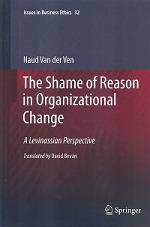 In the explanation to the beautiful exhibition Cézanne, Picasso, Mondriaan in the Hague Municipal Museum remarkable words were used to describe what exactly those three painters did in their work.
In the explanation to the beautiful exhibition Cézanne, Picasso, Mondriaan in the Hague Municipal Museum remarkable words were used to describe what exactly those three painters did in their work.For example, it was said with regard to Picasso that he ‘dismantled’ his images. Where previously landscapes and - certainly in the classical humanistic tradition - especially people were presented as one and indivisible, Picasso began to emphasize parts. He did this by turning inside out ears, noses, breasts and limbs and expanding them.
The portraits in which Picasso proceeds like this, can very well be regarded as striking images of a new view of man. They remind us of anatomical exercises, but now much more radical than Rembrandt painted them. This is not about dead bodies, but about portraits of living people who are laid out in their parts.
One could say: this is a kind of anti-creativity, the opposite of creation. But then you conceive of ‘creating’ as: the ‘making’ of something. In contrast, one could insist that ‘creating’ and ‘splitting’ do not have to lie that far apart, or more precisely, that indeed they belong together. The latter is the thesis of Ellen ten Wolde, a theologian who has studied a lot on the words used in the biblical creation story. She believes that in that story making and separating alternate, and only in combination with one another make possible a cosmos that knows plurality.
The action of splitting, which according to Van Wolde is inherent to creation, is indicated by the Hebrew word bara. This word is traditionally translated as ‘to create’ in the sense of ‘to make’, but ‘to separate’ would, in her view, be a better translation. In addition, the traditional conception of creation as ‘making’ remains intact, and for that Van Wolde points to the word asa.
Asa and bara alternate, for example in the creation of heaven and earth. Darkness is already there, the water is already there, both have been ‘made’ already. By subsequently ‘splitting’ the mass of water, space comes into being between the heavens and the earth and in it God ‘makes’ the light.
The idea that creation contains an aspect of separation seems to me to be philosophically interesting. That is because of the point that Ten Wolde touches. Namely that - beyond the massive, mystical unity of the All - (sub)divisions become possible between creatures. And therewith, paradoxically, relationships and connectedness.
Along that road Ten Wolde takes a distance – for once not through natural science, but in a text-scientific way - from an interpretation of creation that has long been dominant in the West. Namely the idea of the created universe as an eternal, static and stable entity, which has its counterpart on earth in the form of clerical and administrative hierarchies.
By taking that distance, opportunities arise in the human world to deal differently with each other. If separation and distinction are already present indeed in the idiom of the creation story, then it is not suprising that something like a Jewish tradition can grow out of it. Because the culture of debate may be the most important attribute of that tradition.
Also see Kant avant la lettre

